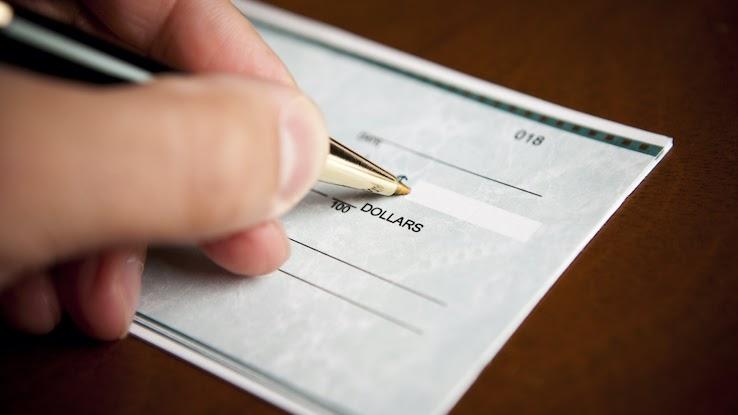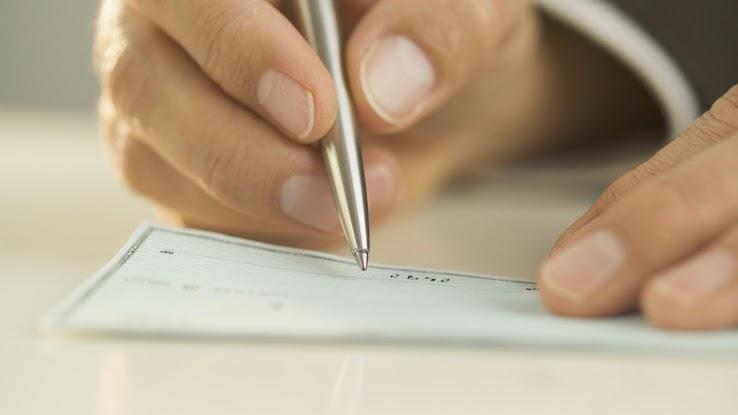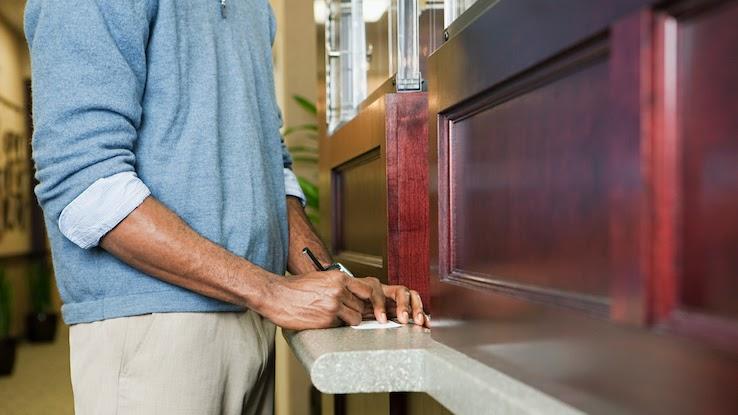How to Check a Limit Switch for Continuity

A manager's check is a secure check that a bank issues on behalf of the individual who has purchased the check. These types of payments are also called treasurer's checks, official checks, and certified checks. All parties involved in a transaction that uses this form of payment can benefit from the use of a manager's check.
Paying by manager's check has several advantages. Most notably, manager's checks offer a guarantee to your recipient that the check is already fully funded, so they won't need to worry about it bouncing. The use of a manager's check also provides convenience and safety when you're dealing with large sums of money. Instead of carrying around cash, using a manager's check means you're at little risk that your money will be stolen or that you'll lose it.
What Is a Manager's Check?

A manager's check draws money from the account holder's personal checking account, though the funds and the account holder's signature have been pre-verified by the bank. In other words, the bank verifies that the account holder has enough funds to cover the amount of the check before the check is issued. Then the bank usually sets the amount of the check aside. Both the account holder and a bank representative must sign a manager's check for it to be valid.
Often, people use certified checks to make large purchases, such as buying a car outright or making a down payment on a house. People also use this form of payment during exchanges between strangers. For instance, say you're selling a used car to a stranger on the internet. You'd be wise to require a manager's check as opposed to a personal check for payment. That way, you don't have to worry about the check bouncing after the stranger has already taken ownership of the car.
Using a manager's check can have a few downsides. First, the account holder cannot place a stop payment on this type of check. Once the certified check has been handed over to its receiver, the money is effectively gone. Second, banks often charge fees to issue manager's checks.

To begin the process of getting a manager's check, contact your bank to ensure it offers this service. If it does, you'll need to go into the bank to perform the transaction. At the bank, you can write a personal check, and a bank representative will verify that you have enough money to cover it. Once that verification is complete, the bank representative can issue your manager's check for the amount. You'll pay any associated fees before receiving the check.
Because of this process, manager's checks aren't nearly as convenient as pulling out your checkbook and writing a check on the spot typically is. Thus, most people don't use manager's checks for everyday purchases. This was the case even when checks were a more popular form of payment.
It's also important to remember that not all banks offer manager's checks. For a bank to offer manager's checks, it must have a physical branch. Banks that operate online only don't offer manager's checks. Furthermore, not all brick-and-mortar banks provide certified checks, either. To determine whether or not your bank offers manager's checks, call the branch directly to ask.
Manager's Check Validity

The extra level of validity of a manager's check stems from the fact that it comes with the certainty that the funds are available and the issuing bank certifies that it'll pay those funds. Even though the money technically is withdrawn from the account holder's funds, the check is issued in the bank's name, obligating the bank to assure the money will reach the payee no matter what. This is why you have to go through the bank's verification process before you can get a manager's check.
Manager's checks essentially function like cash. The amount of the check is the amount exchanged — period. However, they're convenient because they eliminate the risk of carrying large amounts of cash around. If something happens to the cash you're carrying around, it's simply gone. If you lose a manager's check, you can get a new one.
Manager's Check vs. Cashier's Check

Similar to a certified check, a cashier's check offers a guarantee that it'll be paid. The amount on the check is always covered by the bank. However, whereas a certified check draws from an individual's checking account, a cashier's check comes directly from the bank's funds.
Here's how that works. An individual goes to their bank to request a cashier's check. To issue that check, the bank first establishes that the person has enough funds in their account to cover the amount of the check. Then, the bank moves that money from the personal account to the bank's own account. Finally, the bank issues the cashier's check for the predetermined amount and in the name of the payee. Cashier's checks cannot be issued blank. They also cannot be issued without the receiver's name filled in.
There are certain benefits of a cashier's check that don't come with a manager's check. Cashier's checks provide an additional layer of security to the payer, as the receiver won't be providing their bank account number. Additionally, a person can pay with a cashier's check even if they don't have a checking account or a bank account. In that case, they simply pay the bank the amount on the cashier's check at the moment when the bank issues it.
Manager's Check vs. Regular Check

Most people are familiar with regular checks, also known as personal checks. Many checking accounts provide personal checks for free, though others require account holders to purchase them. Personal checks bear your name, your account number and the bank's routing number. When a person pays by check, the receiver cashes it or deposits it into their own account. At that time, the money is withdrawn from the payer's account. In the digital age, the use of personal checks has rapidly declined. Most people transfer money digitally these days.
As mentioned, when transferring large amounts of money, individuals or companies prefer or often require manager's checks. This is because personal checks can bounce if the payer doesn't have enough money in their account to cover the amount written on the check. When dealing with large amounts of money or with strangers, certified checks are the most secure way to go, as they reduce the risk of non-payment.
For example, imagine you sell a piece of antique furniture to a stranger. They pay you with a personal check and take the furniture from your home. But when you go to cash it, their check bounces. Now, you may have no way to get the money or the furniture back. Requiring payment with a manager's check eliminates the possibility that the check will be uncollectible due to insufficient funds.
Sample of a Manager's Check

Every manager's check has the following features:
- Your name
- Your account number
- Your signature
- A bank representative's signature
- The words "certified," "accepted," "manager's check," "treasurer's check" or something similar printed somewhere on the check
Source: https://www.reference.com/business-finance/manager-s-check-84eb62ce57965b95?utm_content=params%3Ao%3D740005%26ad%3DdirN%26qo%3DserpIndex&ueid=fad2b902-5be3-4048-ad87-48bf9d15a711
0 Response to "How to Check a Limit Switch for Continuity"
Post a Comment